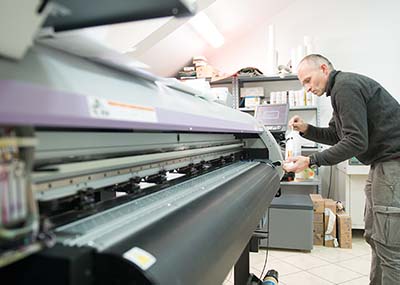When it comes to achieving precise and consistent color measurement, investing in a high-quality spectrophotometer is essential. Spectrophotometers are critical to color quality because they provide repeatable and reliable data that ensure products meet strict color standards. Whether you're in the business of manufacturing durable goods, apparel, cosmetics, or building materials, the right spectrophotometer can make all the difference by detecting even the slightest variations in color. These ...
Embracing Eco-Friendly Solutions for a Brighter Tomorrow In today's rapidly evolving world, sustainability has become a critical focus for manufacturers across various industries. As consumers become more environmentally conscious, the demand for sustainable practices in manufacturing has surged. This shift towards sustainability not only benefits the planet but also enhances business operations, leading to long-term success and resilience. One area where sustainability is making signific...
The Need for Industry Standards for Visual Color Evaluation in Retail LED Lighting In the retail industry, lighting is a critical factor that influences how products are perceived by customers. However, the lack of standardized LED lighting poses significant challenges that can impact both retailers and consumers. Inconsistent Color Reproduction One of the primary issues with the absence of standardized LED lighting is inconsistent color reproduction. Different LED lights can produce varying co...
Why Backward Compatibility in Spectrophotometers Is Key to Consistent Color If you’re here, chances are you rely on a benchtop spectrophotometer to keep your color quality on point. From textiles and plastics to paint, coatings, and more, these high-precision instruments are critical to maintain consistency in your processes. At X-Rite, we engineer our spectrophotometers to perform reliably for years, even in the toughest environments. But no instrument lasts forever, and eventually, an ...
Looking for a centralized location to manage your X-Rite products and services? Check out My X-Rite. Whether you need product information or support, service details, or access to learning resources, our free online portal is just a few clicks away. 24/7 Access: Easily access your personal dashboard from your computer or mobile device around the clock. Personalized Dashboard: See what matters most to you in one convenient location. Effortless Service & Support: Submit and track...
In the sign and display graphics business, as in many other segments of the printing industry, shorter runs and reduced cycle times can stress even the most efficient wide format printing operations. By implementing a color-managed RIP-to-roll (or RIP-to-rigid media) workflow, these operations can ensure that color is right the first time and every time to help speed work through the shop and meet color expectations. Photo by Peter Saunders Today we are share tips from our Color Experts that c...
What happens when you have more than 2,000 brand colors to manage across a complex global packaging supply chain? Things get complicated! Although it may seem easier to create a new color than to dig through databases or binders of color drawdowns to find the closest match, the problem comes later when you’re faced with a huge, unmanageable library. One of our clients, a well-known fast-moving consumer packaged goods (FMCG) company, understands how easily things can get out of control. They wer...
Does your quality control program include visual evaluation? If not, it should. Using the SpectraLight QC as part of a color evaluation workflow. No matter your industry, judging color is more than just measuring samples with a color measurement device. Just because a spectrophotometer says your color is within tolerance, doesn’t necessarily mean it will look right to the human eye. To minimize customer rejects, your color control process needs to include visual evaluation in a light boo...
This time of year, the internet is full of Top 10 Countdowns. It’s a tradition we’ve embraced since 1940 when the Billboard published its first chart ranking the top selling recorded songs. Since then, others have jumped on the bandwagon to highlight the most popular trends of the previous year. We’ve been publishing our top-read blogs since 2016, and we’re happy to see some educational topics like color perception, tolerancing, and spectrophotometers continue to r...
It’s important to ensure design intent is realized each time and everywhere a product appears. But with so many variables to impact print quality, how can brands utilize suppliers around the world and still achieve consistent color? Our X-Rite Pantone Packaging Color Experts have designed a series of consulting services and workshops to help you get the most from your print, packaging, plastic or textile value chain. Offered both online and onsite, these interactive sessions i...
You say color is important, but do you know why it’s so important? In reality, color is a critical element in the manufacturing process. Unfortunately, many manufacturers are realizing that getting color right is much harder than it used to be, and the brands they support are asking them to meet tighter tolerances. Here’s why. While advances in color technology – think metallic packaging, pearlescent finishes, custom fabrics and vibrant new colors – entice customers, the...
When customers are just getting started with color management, they often ask, "What is the difference between a spectrometer and a spectrophotometer?". With such a minute spelling difference, it's easy to make a quick typo and get the wrong answer for this color question. So...what's the difference? Spectrometers vs. Spectrophotometers What is a Spectrophotometer? A spectrophotometer is a color measurement device that is used to capture and evaluate color on just about anything, in...
How many trial and error steps does it take you to formulate a color? If you answered more than three, it might be time to enlist the help of a computerized solution. Computer-aided color formulation can bring huge benefits to your business. Out of the gate, even beginners can hit color targets faster, saving time, money and expensive colorants. Once you have established an accurate method, you can expect to match 95% of your color formula requirements within a reasonable color distance on the f...
With more consumer package goods (CPG) brands implementing packaging quality control programs to monitor color tolerances, converters and package printers need color measurement solutions that integrate directly with reporting systems. Our IntelliTrax2 Pro and eXact Auto-Scan Pro Scanning Solutions combine the power of our industry-leading automated scanning devices with the power of our end-to-end software solutions to meet the needs of brands, packaging converters, and commercial printers alik...
X-Rite acquired GretagMacbeth in 2006, making most GretagMacbeth handheld and benchtop spectrophotometers 20+ years old. If you're still using one of these legacy spectrophotometers and color consistency is important to your business, we encourage you to consider upgrading to a new, ISO-certified X-Rite device for the best experience. Here at X-Rite, we continue to research and improve our color measurement technology so our customers can meet tighter color control tolerances. Improved color mea...
Each year we enjoy looking back to see what our customers enjoyed reading. Here are our top blogs and learning resources from 2021. Top Blogs of 2021 Some of these blogs make the top 10 list every year. Do any interest you? Color Perception Part 1: The Effect of Light This first blog in a 3-part series offers a non-technical explanation to the way we perceive color, and the role of light in color perception. How to Calibrate your Monitor in 10 Steps Are ...
In a perfect world, you should be able to put ink in the press and simply run a job. Unfortunately, every year flexo and gravure printing operations waste ink, substrate and press time trying to get color right. Although advancements in technology have made it easier to achieve color accuracy, the variables that affect color still exist. In this three-part series, we're sharing over two dozen reasons your color might be wrong on press. If you missed the first article - Instrumentation - check i...
In a perfect world, you should be able to put ink in the press, run a job, and achieve color consistency. Unfortunately, every year flexographic and gravure printing operations waste ink, substrate, and press time trying to get color right. Although advancements in technology have made it easier to achieve color accuracy, the variables that affect color still exist. In this three part series we’ll share over two dozen reasons your color might be wrong at press side. Today’s topic lo...
In a perfect world, you should be able to put ink in the press and simply run a job. Unfortunately, every year flexo and gravure printing operations waste ink, substrate and press time trying to get color right. Although advancements in technology have made it easier to achieve color accuracy, the variables that affect color still exist. In this three-part series, we’re sharing over two dozen reasons your color might be wrong on press. We’ve already covered two important factors &nda...
The International Standards Organization has defined ISO 12647 as a set of Graphic Arts standards for printing. Included are eight parts: Part 1: Print parameters and measurement methods Part 2: Offset lithographic processes Part 3: Coldset offset lithography on newsprint Part 4: Gravure printing Part 5: Screen printing Part 6: Flexographic printing Part 7: Proofing processes working directly from digital data Part 8: Validation print processes wo...











.jpeg?h=285&la=en&w=400&hash=6F4520F30E11DA92838E11C8E55C4BFB32664563)








